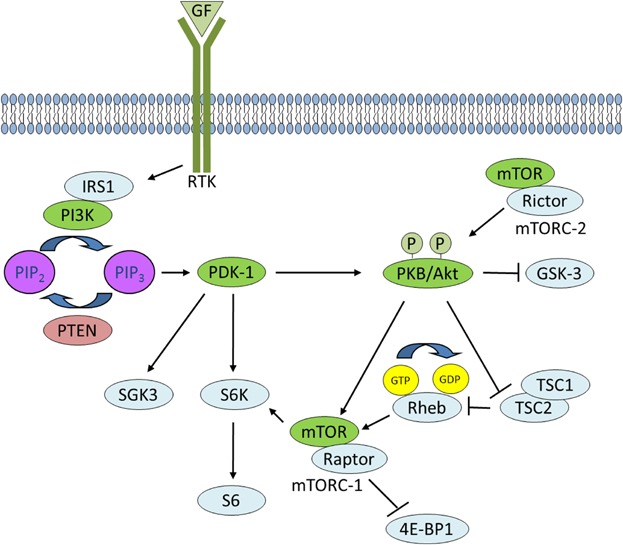Fig 1.

PI3K signaling. Activated RTKs activate class I PI3K through direct binding or through tyrosine phosphorylation of scaffolding adaptors, such as IRS1, which then bind and activate PI3K. PI3K phosphorylates PIP2 to generate PIP3 in a reaction that can be reversed by PTEN. PDK-1 and PKB bind to PIP3 at the plasma membrane, and signal to multiple downstream targets such as SGK3 and S6K and GSK-3, respectively. RTK signaling also activates mTORC-2 which phosphorylates PKB. PKB activates mTORC-1 through phosphorylation of TSC2 within the TCS1–TCS2 complex, which blocks the ability of TSC2 to act as a GTP-ase-activating protein for Rheb. Accumulated Rheb-GTP activates mTORC-1 which phosphorylates downstream targets such as 4E-BP1.
